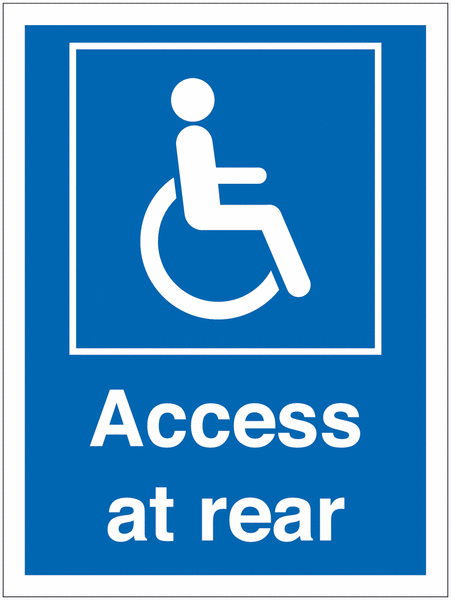Disabled Access Signs
Need help?
 Do I need Disabled Access signs?
Get the Appropriate Disabled Access Signs Quickly & Easily
Do I need Disabled Access signs?
Get the Appropriate Disabled Access Signs Quickly & Easily
At Seton, we offer a range of labels, signs and solutions to ensure that safety is made easy in the workplace. From disabled access signs, wheelchair ramps and projecting 3D signs, to customisable labels and signs, our customers are more than adequately catered for with our wide range of specialist products.
Our disabled access signs are no different; they are designed to help provide information for those less abled. Seton is recognised as an industry leader when it comes to health and safety matters, and we ensure every base is covered as we strive to make the working environment a safer place; especially when it comes to matters of disabled access.

Expert Information
Disabled Signage and Access for Disabled People Signs
Our range of disabled signage and disabled access signs cover a variety of safety areas. What’s more, we endeavour to ensure the correct message is given and that it gets across in the most simple and effective way possible.
As one of the world’s leading suppliers of safety signs, we at Seton are fully educated in the appropriate areas of legislation; enabling us to provide full protection in working environments. All our disabled access signs meet the latest Equality Act 2010 (formerly the Disability Discrimination Act 2005) and ISO 7010 legislations, the latter of which governs the symbols used on safety signs.
We stock disabled access signs that indicate safe points of thoroughfare for disabled workers or visitors, such as access to disabled parking areas and the location of wheelchair ramps.
For a more specific warning, there are customisable signs available. These signs come in a range of sizes and shapes tailored to convey a specific message for those less abled, such as our Custom Disabled Parking Signs.
These signs give employees and visitors the best possible chance of seeing where disabled access points are located, with all symbols conforming to BS EN ISO 7010. They can be used outdoors as well as indoors as they are made from semi-rigid plastic. They can also be easily secured as they are supplied pre-drilled.
Various signs fixings are available for safely securing the correct signage to the appropriate surface. Permanent adhesive is the go-to product for heavier signs in an exterior or interior setting. This product is ideal for affixing rigid plastic signs without the need to drill holes in the sign. The adhesive is weather and UV resistant, and has excellent sealing properties.
Which Disabled Access Signs Does a Business Need?
In accordance with the Equality Act of 2010, employers are obliged to treat their staff equally, which means making reasonable adjustments for team members with a disability. These could include changing physical features, installing doors that open automatically or putting up disabled access signs to help people find their way around more efficiently.
Before choosing which disabled signs or symbols you need, it makes sense to speak with disabled team members or a disability group to find out what they think could be helpful. When you have established what would make their working life happier, it’s important to make any changes as soon as possible. Seton can help you find indoor or outdoor signs for your facility that will benefit both visitors and team members.
What Do Disabled Signs Mean?
Disabled signs indicate that a facility is suitable for people in a wheelchair or those with other disabilities. They can help people to navigate the layout of a building and ensure that they can reach a suitable exit point in case of an emergency. Available in various materials, they are easy to put in place and maintain.
- Wheelchair access sign. These general signs indicate where wheelchair users or people with limited mobility can gain access to a building. You could place these near an accessible doorway or a bathroom.
- Wheelchair ramp sign. When disabled people arrive at your premises they need to find out where the best point of access is. By using this sign, a business can indicate where their wheelchair ramp entrance is situated, so people can find their way with as little delay or inconvenience as possible.
Are Disabled Parking Signs Essential?
According to a People With Disabilities In Employment Briefing commissioned by Parliament, “7.6 million people of working age (16-64) reported that they had a disability in January–March 2019, which is 18% of the working age population.” With a sizable amount of the working population potentially requiring a dedicated parking space, it is essential to take into consideration the needs of visitors and your staff.
If you have a disabled employee, you are obliged under the Disability Discrimination Act 1995, which was updated in 2004, to have an additional 2% of available spaces dedicated to disabled parking. You should clearly mark each of these spaces with a wheelchair sign to make people aware of accessible parking spaces.
Seton has a range of inexpensive wheelchair signs that you can use to remain compliant with current legislation and make life easier for your disabled colleagues.







